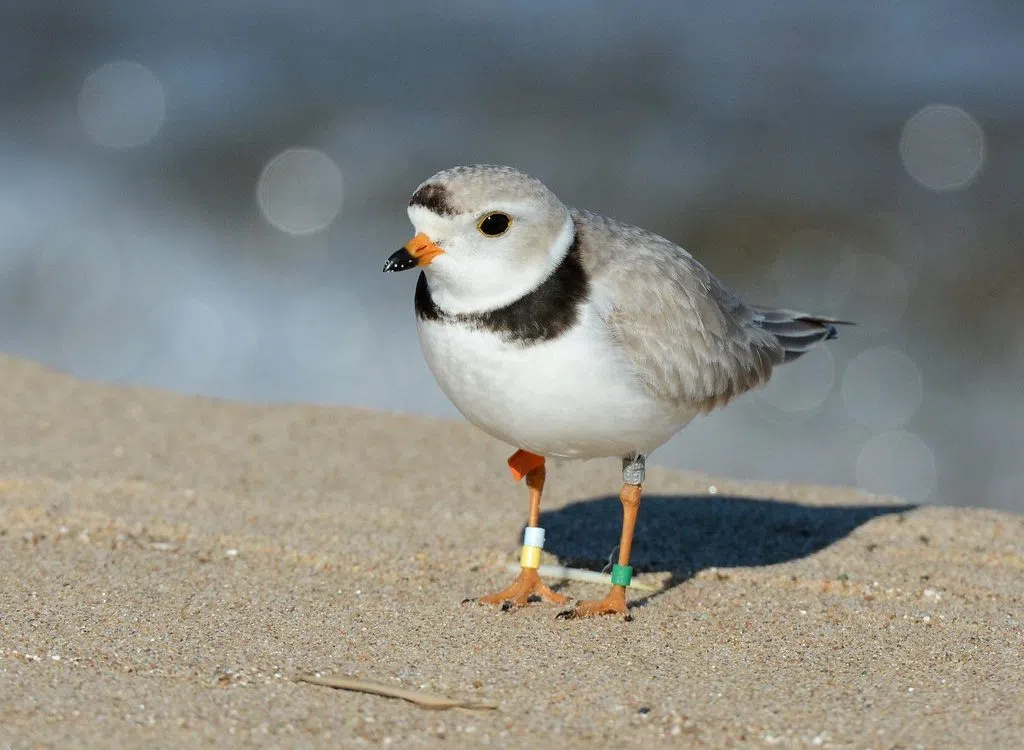
Beach visitors at Presqu’ile Provincial Park are being asked to respect “bird visitors,” with the beach in Brighton serving as an important rest stop for several species of migrating shorebirds.
What’s more, it’s also possible the endangered piping plovers may soon return.
“Our beach is an important rest stop for over 10 species of migrating shorebirds from sandpipers and plovers to dunlin and even the elusive whimbrel,” noted Presqu’ile park staff, in a recent social media post.
Many of these birds are travelling thousands of kilometres to reach nesting grounds and use Presqu’ile to “rest and refuel before continuing their journey north.”
Until more recent years, the piping plovers hadn’t made a return to nest on Presqu’ile beaches since the early 1900s. The species returned for the first time since the early 1900s in 2016.
“We also anticipate the endangered piping plovers will return to the beach any day to begin scouting a location to potentially nest on the beach again this summer,” said Presqu’ile staff, in their post.
In years past when the water levels were higher, the species didn’t make their way here, as such conditions aren’t considered ideal for the plovers.
According to Environment Canada, the piping plover is described as a small migratory shorebird that breeds on the sandy and stony coastal beaches of Eastern Canada between April and August.
The plover establishes territories, lays eggs, and raises their young on the “open beach” – and camouflage is said to be the species’ main defence. The sand-coloured adults, chicks and eggs can be difficult to see.
In their recent social plea, Presqu’ile stated: “We ask all visitors to share the beach with our bird visitors.”
Beachgoers are being asked to always keep dogs off the sand beaches and to stay out of any fenced-off areas (plover breeding areas have previously been fenced/posted.)
Visitors are also asked to give birds lots of space as they forage for food along the shoreline, and not to chase the birds.
Flying kites on the beach also isn’t permitted currently. The beach is closed for kiteboarding/windsurfing from May 1 to June 10 annually, noted the park.
Again, this is to avoid disturbing migrating shorebirds using the beach to feed and rest during their long journey north, explained staff.
During the spring migration, a rare event known as a “fallout” can also occasionally occur – this is when “a large flock of hundreds of birds descend on a beach exhausted and hungry,” explained Presqu’ile, while sharing a photo of a “fallout” event from May 2018 at the park.
If visitors see a large number of shorebirds on the beach at any time this spring, they’re asked to let park staff know.
The piping plover was designated as endangered – which means the species is at great risk of disappearing from Canada – back in 1985 by the Committee on the Status of Endangered Wildlife in Canada. The plover was also listed under the federal Species at Risk Act in 2003.
According to Environment Canada, the recovery of plover population requires a collective effort of individuals, communities, conservation groups, industry and governments.
“With the participation of all, the recovery of this species is possible,” states Environment Canada online.
You can learn more about ways to help keep the plover safe with tips while at the beach accessible online.
(Written by: Sarah Hyatt)
